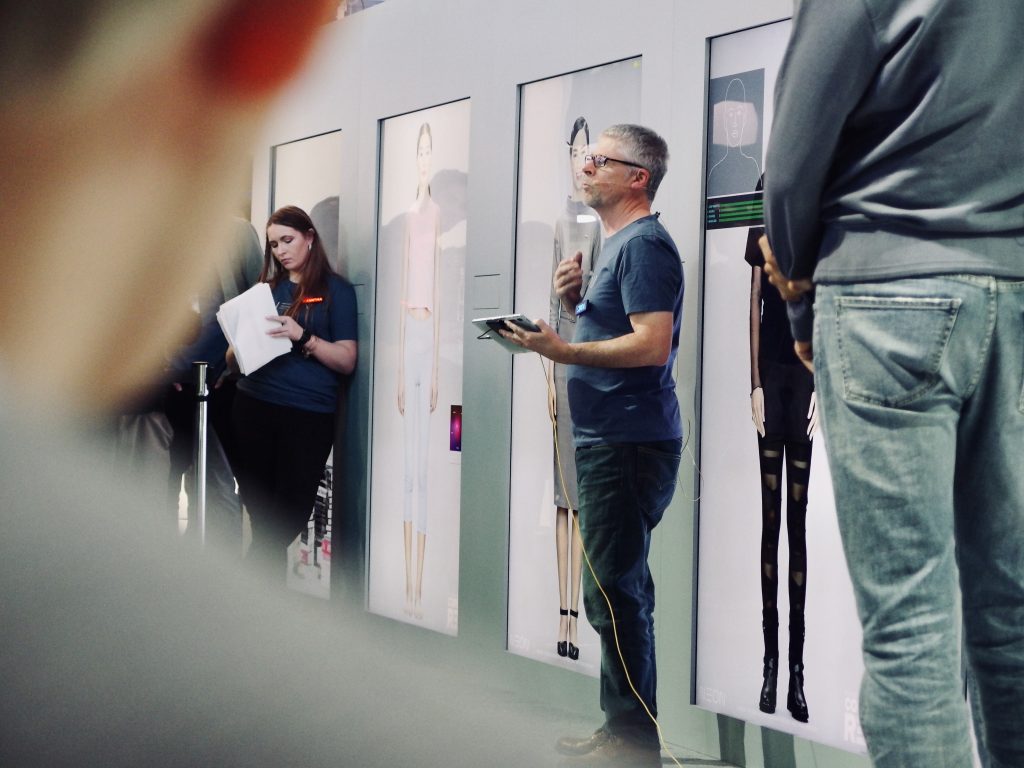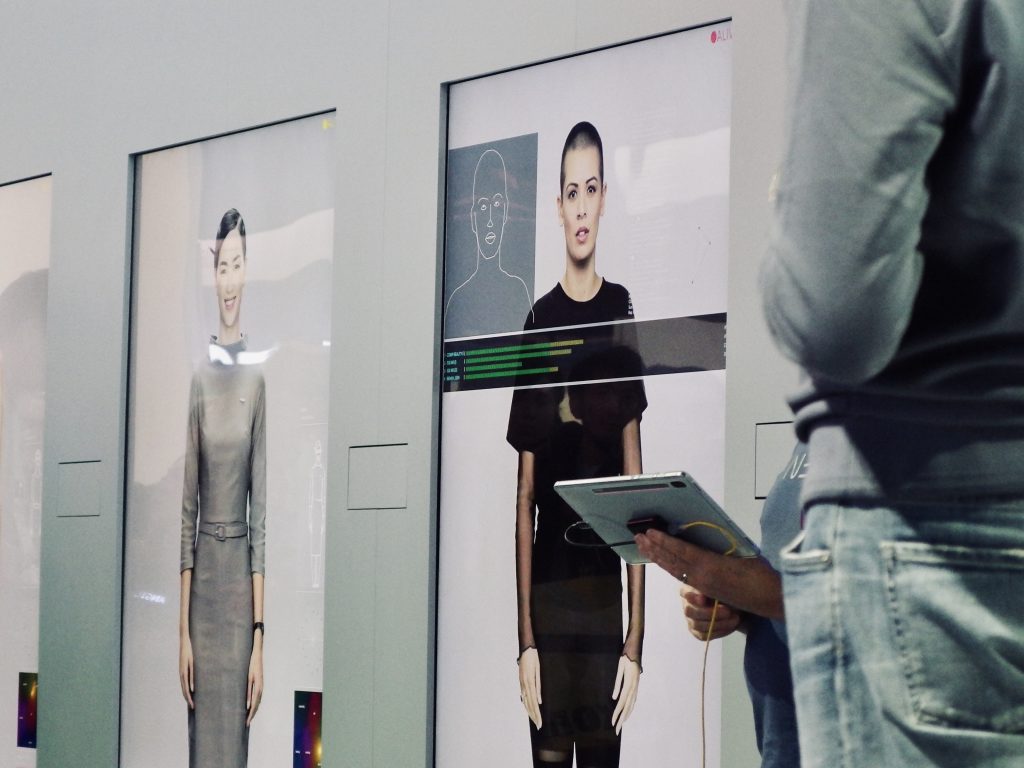On NEON’s Ambitions for an Artificial Human
The company’s prototype personality mirrors goals and fears in tech-fiction television

Few exhibitors at CES 2020 reached beyond our conceivable world like NEON, a Samsung spin-off helmed by StarLabs President and CEO Pranav Mistry, and the debut of their humanoid AI bots. Intentionally minimal in pre-show communications, they limited their announcement to these two words: artificial humans. NEON employees appeared at CES preview events, but revealed little information about the presentations set for the official show floor. When general skepticism was served by attending press, NEON’s team persisted. “You’re going to want to see it,” one said.

What is it, though? Even through the presentation the company’s overarching goal remained absent. Their product, for better or for worse, appeared before everyone in attendance on the six-foot-tall LED screens that formed the outer boundaries of their booth, showing looping videos of AI-generated humanoids smiling, nodding, using a camera and performing other rote tasks. Fueled by a neural network named CORE R3 and Spectra, software designed to provide NEONs the ability to learn, convey emotion and respond to conversations and queries in real-time. They demonstrated how the software can tweak a NEON’s face in the smallest ways—be it a slight arch of an eyebrow or squint of an eye. When language is added to the NEON, its lips form the appropriate shapes for the sounds produced. Surrounded by the tame-by-comparison drones and a ping-pong playing robot, NEON’s presence at CES proved to be quite impactful.

“We truly believe we can bring science fiction to reality,” Mistry told the crowd as he opened his presentation. The sentiment drew mixed reactions. For some, the future is a terrifying world of technology gone awry; for others, it’s filled with possibility and utopian potential.
Mistry main question is, “Can we make technology more human?” While other companies are seeking better ways to seamlessly integrate their technology into our lives, Mistry is seeking to fundamentally alter our lives altogether. Rather than reduce technology to auxiliary roles in our homes and on our bodies, technology would be a companion capable of changing, learning, assisting, entertaining and teaching.

Mistry pins the desire for a human-like digital companion on the younger generations—at least those younger than his. The younger subset of a large part of our global population has never known a world without the immediacy of technology. Most individuals born today will not know an existence without voice assistants. But, as Mistry points out, voice assistants are merely an evolution, a stepping stone toward a more all-knowing and human-acting interface. “When my three-year-old daughter talks to a voice assistant, she says, ‘Stop! Open! Close!’ She talks to the machine in the terms of a machine,” Mistry explains. “I don’t think that’s a human interaction. There’s the speech part of it, but that’s not how you talk to a human.”
Mistry insists that with NEONs (which will bear names at launch like Hana, Frank and Natasha, for example) our tone will have to change and with that comes forfeiture. Whether it is forfeiture of our superiority or of our ego remains unknown.

“Is it hard to explain? Yes. It is hard to explain because this is not a simple concept,” Mistry says. “It is really hard to understand what is happening—even for some of my colleagues; they’re still figuring it out. What are the possibilities and the opportunities that this future could provide us?”
Plenty of Mistry’s questions remain hypothetical, even as he seemingly lays out a plan for bringing NEON to market. The company has been training NEONs on real-life human beings—ways to pick up on natural gestures, reactions and behaviors. Then, once it has digested enough to cross the uncanny valley, the NEON is its own entity, informed by (but not replicating) an actual person. The ones we saw being demonstrated were incredibly convincing. It can form new thoughts, act independently from human control and even become “upset” should you act angrily or unjustly.

The way NEONs will permeate everyday life shouldn’t shock or scare, though; they won’t be able to physically walk or sit alongside you—for now at least. Like Alexa or Siri, they’ll live within devices that already exist; phones, TVs, tablets and on screens at restaurants, hotels, airports and more. Unlike those aforementioned assistants, though, they’ll be able to perform more intimate tasks. They could teach us a language and recognize when their training proves ineffective. They could host a private yoga class for you or for friends and provide real-time feedback on your poses. They could even watch TV with you or join in on a board game—though you’d have to move pieces or draw cards for them. They will not, Mistry explains, control your smart-home devices or provide you real-time weather updates.

This presence is reminiscent of entities found in films, and Mistry isn’t shy about his aspirations for bridging the gap between storylines found in tech-fiction and real life today. But, does attempting to mirror these fictional entities ignore the fact that existence alongside them is oftentimes less than glamorous? In Westworld, HBO’s popular tech-fiction TV show, for instance, it was only a matter of time until its “hosts” (human-presenting artificial intelligences bred to entertain and excite) realized that humanity’s only advantage was their physical ability. Because they’d been programmed to adopt physical traits and the finer details about behavior, hosts escaped from the “amusement park” they’d been confined to and formed their own rebellion. In other portrayals, the omnipresent digital pal outsmarts its blood-filled counterpart. Look no further than Netflix’s popular Black Mirror for other instances of technology upheaving society.
After living through our own Westworld episode at an HBO-hosted immersive theater dinner during CES, we wonder if it makes sense to compare the show’s “hosts” with NEONs. Will NEONs do far more good than they ever do harm? (Can they even harm us at all?) Will we ever actually live alongside a NEON? Is that even something to desire? Like Mistry, we’re left without answers to the questions we pose, but we’re likely to be living in a sci-fi world—at least one where customer assistance is provided by humanoids—sooner than many might imagine.
Images by Evan Malachosky












